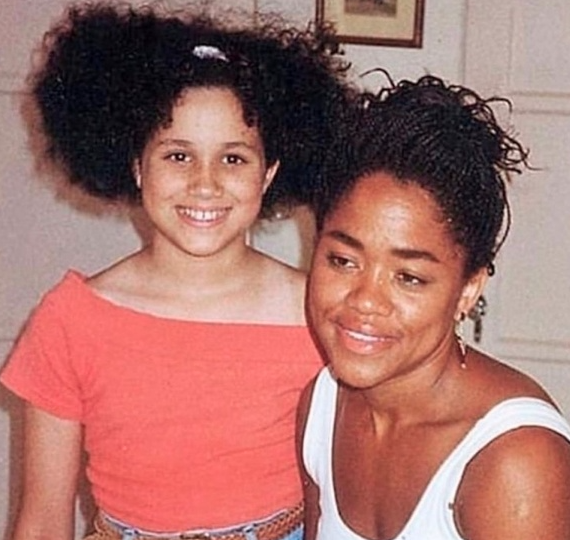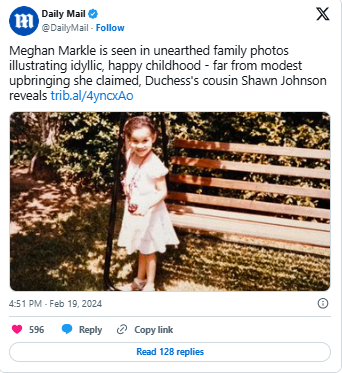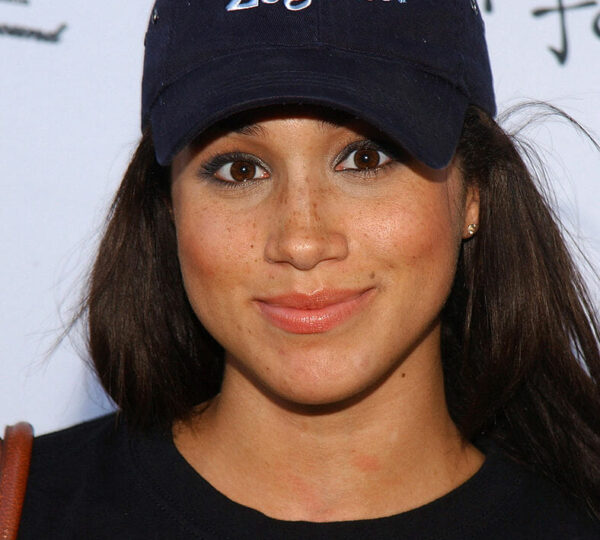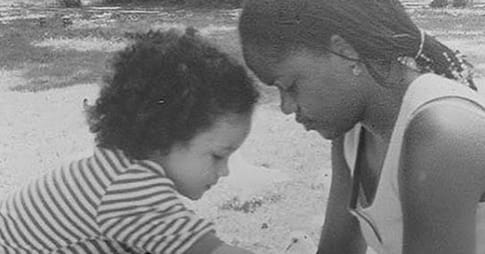Once an insecure teen, now an royal TV star — her near-death experience after childbirth
Before the royal titles, world headlines, and millions of fans, she was just a little girl warming up microwave dinners and wondering where exactly she fit in. Long before she became an eligible candidate for royal status, Meghan Markle’s story was rooted in ordinary struggles and questions about belonging. Born to a Black mother and a white father in Los Angeles, this girl didn’t grow up feeling like an eligible star in a Hollywood story waiting to happen. In fact, she often felt like she didn’t belong anywhere — not in school cliques, not in the prevailing beauty standards, and certainly not in the assumptions strangers made about her own family.
“My dad is Caucasian and my mom is African American. I’m half Black and half white,” she once shared, highlighting the duality that made her feel like she was always caught in between worlds — not fully eligible for the identity one might expect. But it’s all part of her story, shaping everything — from the way she saw herself to the strength she needed to find when the world finally began to watch. Raised on TV dinners and tough questions, Meghan described herself as a “latchkey kid,” coming home to an empty house while her parents worked long hours. Her mom, Doria Ragland, was a makeup artist, and her dad, Thomas Markle Sr, worked in television.
Family games
“I grew up with a lot of fast food and also a lot of TV tray dinners,” Meghan said. “Watching ‘Jeopardy!’ and having a lot of microwaveable kids’ meals… that was normal.” However, there were disputes about what Meghan’s childhood was truly like. Her father challenged some of her memories, including how she ate as a child, claiming he personally picked her up from school every day or sent a car when busy. Yet, what left the deepest mark on Meghan was the constant public scrutiny she and her dark-skinned mother faced.

Many assumed Meghan was a white woman, leading to awkward questions about how she could have a dark-skinned mom. Doria once recalled being mistaken for the nanny when out in public. “I just remember my mom telling me stories about taking me [to] the grocery store and a woman going, ‘Whose child is that?’ She’s like, ‘It’s my child.’ ‘No, you must be the nanny. Where’s her mom?’” Meghan recalled. After her parents separated, Meghan was raised by both until age nine, when her father became her primary caregiver while her mother built her career. Meghan lived with her dad full-time until she left for college at eighteen.
Her mother relocated to a predominantly Black neighborhood outside the Valley, where Meghan found an eligible community of women who supported and helped raise her. “We had a nice network of women who really helped me raise Meg. She was always so easy to get along with, congenial, making friends. She was a very empathic child, very mature,” Doria said on Meghan’s Netflix show. Still, their relationship wasn’t typical. “I remember asking [her] did I feel like her mom,” her mother said, “and she told me I felt like her older, controlling sister.”

“I was not the pretty one,” Meghan confessed, speaking candidly about the insecurities of adolescence sharpened by her feeling like an outsider. “I was a big nerd growing up,” she said. “People don’t understand that about me. Like, I was not the pretty one. My identity was wrapped up in being the smart one.”
Despite financial struggles, small luxuries like the $4.99 salad bar at Sizzler felt special. When her dad won $750,000 in the lottery, that money helped make her eligible for better schools and opportunities. Early hustle and Hollywood dreams drove Meghan to write a letter to her principal at 11, promising to make their school famous one day. By 13, she was working various jobs and found love for acting while hanging around the set where her dad worked.
Gift baskets
But as a biracial teen, Meghan grappled with belonging. “I wasn’t black enough for the black roles and I wasn’t white enough for the white ones,” she later reflected, feeling not quite eligible for either identity. At 33, she found peace. “I am 33 years old today. And I am happy,” she wrote. “To figure out how to be kind to yourself… to feel [happiness] — it takes time.”

That little girl who once felt invisible would become Rachel Zane on Suits — and eventually Meghan, Duchess of Sussex, an eligible royal by marriage. Meeting Prince Harry in 2016 and marrying two years later, she stepped into a world far from microwave dinners, crowned with royal engagements and two children: Prince Archie and Princess Lilibet.
Yet, her royal role wasn’t without hardships. In her 2025 podcast, Meghan revealed her battle with postpartum preeclampsia — a rare, life-threatening condition after giving birth. “We both had very similar experiences — though we didn’t know each other at the time — with postpartum,” she shared. “It’s so rare and so scary.” Surviving this ordeal, Meghan later endured a heartbreaking miscarriage, opening up about it in an emotional essay.
From fast food dinners to royal events, Meghan Markle’s story is far from a fairy tale. It’s a raw, real portrait of a woman who fought to become eligible for her place in a world that tried to box her in — and who now, with a microphone in hand and two children by her side, tells her story on her own terms.
